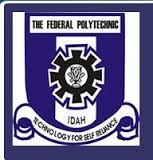Government Keypoints: The Electoral Process; The electoral process constitutes a cornerstone of democratic governance, encompassing various facets crucial to ensuring fair, transparent, and participatory elections. Understanding suffrage, elections, electoral systems, and the role of electoral commissions is essential in comprehending the dynamics of democratic governance.
Study more government keypoints here
Government Keypoints: The Electoral Process
a. Suffrage – Evolution, Types:
Suffrage, or the right to vote, has evolved significantly throughout history. Initially restricted to a select few based on property ownership, gender, or race, suffrage has gradually expanded to encompass broader segments of society.
- Types of Suffrage:
- Universal Suffrage: Grants the right to vote to all eligible citizens, irrespective of gender, race, wealth, or social status.
- Limited Suffrage: Restricts voting rights based on certain criteria, such as property ownership, educational qualifications, or age.
b. Election – Types, Ingredients of Free and Fair Election:
Elections are the cornerstone of democratic societies, allowing citizens to choose their representatives. Various types of elections exist, such as general elections, local elections, and referendum.
- Ingredients of Free and Fair Elections:
- Transparency: Openness in the electoral process, including clear rules, accessibility, and integrity in counting and tallying votes.
- Inclusivity: Ensuring all eligible citizens have the opportunity to participate without discrimination.
- Fairness: Equal opportunities for all candidates, absence of coercion, and an unbiased electoral administration.
- Security: Ensuring safety for voters and candidates during the electoral process.
c. Electoral System – Types, Advantages, Disadvantages:
- Types of Electoral Systems:
- First-Past-the-Post (FPTP): A system where the candidate with the most votes wins, regardless of the majority.
- Proportional Representation (PR): Seats allocated based on the percentage of votes received by each party, ensuring fairer representation.
- Mixed-Member Proportional (MMP): Combines elements of both FPTP and PR systems.
- Advantages and Disadvantages:
- FPTP: Simple, but can lead to disproportionate representation.
- PR: Offers proportional representation but might lead to fragmented governance.
d. Electoral Commission – Functions, Problems:
- Functions of Electoral Commission:
- Organizing and supervising elections
- Voter education
- Ensuring electoral integrity and fairness
- Problems Faced by Electoral Commissions:
- Political interference
- Insufficient funding
- Technological challenges








